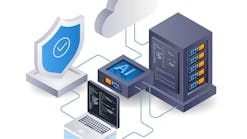Great Expectations: A Beginner’s Guide to Implementing Analytics
If you have read the classic novel Great Expectations, you will realize that plot twists result in both great opportunities and inevitable surprises. As you launch or grow an analytics initiative, do not follow the lead of Charles Dickens’ characters. Instead, see if this beginner’s guide can help you to minimize the pain and maximize the gain on your analytics journey.
Reporting vs. Analytics: What Do You Want to Be When You Grow Up?
There are natural synergies between reporting what happened and using analytics to predict what will happen. Both use data, require a data lake and governance, and utilize commercially available tools. But let’s not kid ourselves; reporting yesterday’s weather is not the same as predicting tomorrow’s thunderstorm. Reporting is rooted firmly in today’s processes and logic. Analytics, on the other hand, will disrupt the status quo and is a significant change-management exercise.
Developing a Road Map: Not Just Any Path Will Do
Weird-sounding tools like Hadoop, Spark and Python can confuse even the savviest executive. Your analysis-driven road map should include English-language versions of a broad set of use cases to define expected benefits, a data lake to describe how everything fits together, standards-based tools for everyone from the rocket scientist to the novice to work with data, and a robust governance platform to make sure your data is the highest quality. If everyone understands what’s going on, you’ll find an easier path to success.
Data Governance: Why It Is Your Most Important, Boring Deliverable
Anything that generates or modifies data will have an impact on analytics. If the analytics team isn’t involved early, future projects may be slow to achieve value or be unnecessarily costly. Good governance is best achieved in partnership with IT, security, legal, the business units and the analytics team. Data governance enables adoption of enterprisewide policies, a common data dictionary and data curation to ensure the data fueling your analytics engine keeps things humming. Building a governance platform may not sound exciting, but without it, companies will spend unnecessary time and money prepping data rather than using it to create value.
When to Get Started: Go with What You’ve Got Today
Just as moving from monthly to more granular meter data can provide greater insights, you can get benefits today from monthly data. Companies do not need an army of Ph.D.-level data scientists to develop insights. In fact, selecting standards-based tools — R, Python, SPSS, SAS, Matlab — adopted by multiple industries can increase your available talent pool and allow everyone, from amateurs to experts, to contribute quickly.
What Not to Purchase: Stay Away from a Roach Motel
Countless commercially available tools are built like the proverbial roach motel — data goes in, but insights and enriched data don’t come out. Too many analytics tools are sold on the strength of solving a single issue or a narrow family of problems such as theft detection or vegetation management. As you work with more and more business units, you will wish you had selected standards-based tools rather than having followed an application-based approach.
How to Prioritize: Proof of Concept or No Business Unit Left Behind
Panic ensued the first time people got in an elevator that didn’t have a human at the controls. Similarly, executives may be reluctant to eliminate a process or trust an insight that is derived from a machine-based analytic. If your strategy focuses only on early wins, your path to analytics maturity will be long, narrow and painful. Instead, use early wins to maximize ROI and gain broader enterprise reach and adoption.
To Cut or Not to Cut: Avoid Becoming the O&M Grim Reaper
Inevitably, executives will want to know how much analytics can be used to help cut operations and maintenance costs. If you bite on this bait, analytics will have a short lifespan because no department will want your outside assistance to "help" them cut their budget. Instead, bring a broader perspective and share what analytics can do for their organization. Be sure to quantify hard benefits as well as soft improvements to avoid the budget-cutting trap. Track analytic performance over time and you will find that the business benefits will protect you from focusing solely on budgetary impacts.
Managing Expectations: I Have an Analytics Platform, but Everyone Is Trying to Set It on Fire
Burning platforms can help rally everyone to solve a common issue. But if you’re standing on the platform being set alight, things can get messy quickly. Success can lead to runaway expectations just as failure can generate a lot of finger-pointing. A robust communication plan focused on road map execution and benefits achieved helps identify issues quickly, publicize success and make sure the analytics team is engaged with business units to make a bigger difference — and that is what we should all be about. ♦
Raiford Smith is vice president of energy technology and analytics at Entergy in Houston, Texas.


